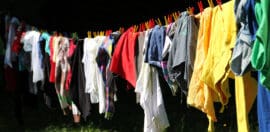‘Positive’ results for battery stewardship program

2 November 2022 at 7:53 pm
A program to recycle Australia’s batteries shows impressive results thanks to an industry-led model and growing awareness amongst consumers.
A battery stewardship scheme is showing promising results, just six months into its operation.
Since launching in February, B-cycle, a national, government-backed battery recycling scheme, has collected almost one million kilograms of batteries for recycling, or the equivalent of 38 million AA batteries.
That’s double the national collection rate of loose batteries and power tool batteries.
Founded by the not for profit Battery Stewardship Council (BSC), B-cycle combats one of the nation’s fastest growing waste streams by providing drop-off points in thousands of locations for people to safely and conveniently recycle everyday loose batteries.
Prior to B-cycle’s creation, 90 per cent of used batteries were ending up in landfill, wasting recoverable resources and damaging the environment.
According to a new report, the Positive Charge Report, there are now more than 3200 battery drop off points around the country and more than 918,000 kilograms of used batteries have been collected from around Australia.
How B-Cycle works
B-cycle has transparency at its core, with all participants in the scheme required to be accredited.
Participants sign a Battery Stewardship Commitment, which includes requirements ensuring safety and transparency across the battery lifecycle, and audits that verify compliance and give assurance of mineral recovery from used batteries.
The scheme is funded by a levy of $0.03 per 24 grams on imported batteries, paid to the BSC.
Battery retailers then sell and promote B-Cycle accredited batteries. After they’ve been used, the batteries are left at a B-cycle collection point by consumers.
The cost of collecting, sorting and processing batteries is offset by rebates, with at least 75 per cent of the import levy going directly to rebates.
During processing, usable materials are taken from the batteries and used in the manufacturing of new products including new batteries. Many of these materials are finite, but over 95 per cent of the materials in a battery can be recycled.
Barriers to recycling
Speaking to Pro Bono News, B-cycle CEO Libby Chaplin said the company’s research revealed that before the scheme launched, 63 per cent of people threw their batteries in their household bins.
As well as wasting precious resources, this can result in costly and dangerous bin truck fires.
Chaplin said this throw-away attitude to batteries could be due to a combination of a lack of awareness of battery safety in the rubbish network as well as not knowing where or how to recycle batteries.
The convenience that B-cycle offers, with its large network of collection points, is designed to address the latter.
“That’s really what we’ve chosen to do, is to focus on providing a national convenient network. And fortunately that’s been incredibly successful even in our first six months and we’ve been able to roll out about 3200 drop off points around the country,” she said.
“About 80 per cent of them are now [at] retail stores. So the major stores, Woolies, Aldi, Bunnings have all signed up and people can just go to our website, pop in their postcode and find a location near them.”
Disrupting the market
Given the environmental and safety costs of not recycling batteries, Chaplin said it had been important to move quickly to establish the recycling scheme.
“We really wanted to be able to radically disrupt the market. Australia, compared to other countries, had a very low collection rate, and so we felt like we needed to do something to shift that fairly quickly.”
She said the success of the program so far was encouraging to see.
“I think it’s because it’s been built in very close collaboration and partnership with industry,” Chaplin mused.
“We’ve got about 90 per cent of the industry participating, which for a voluntary program is quite an impressive level.”
Chaplin explained that the scheme was made voluntary to reduce the red tape and extra costs involved in a regulated scheme.
“[A regulated scheme] also starts to really lock in the way your scheme is designed. As a voluntary scheme, we’re able to really adapt and change very quickly, whether it be the way our accreditation system works or the levy itself.”
The levy has already been raised once over the past six months due to the success of the scheme.
And the almost open-source nature of the scheme means industry and retailers can always opt in provided they meet B-Cycle’s safety and transparency requirements.
Looking to the future, Chaplin said B-cycle “had just scratched the surface”.
“Our goal really is to get 100 per cent of batteries out of the general waste system, so we’ll always be working towards that. We’re focused on increasing the collection network.”
B-cycle is also looking to expand into new areas, like the next size up of portable energy storage and things like e-bike batteries, as well as how the B-cycle model could be scaled for EV batteries.







